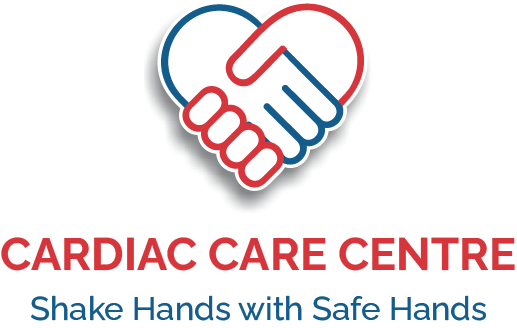Angioplasty in Indore
Home » Angioplasty in Indore

Angioplasty Indore
The procedure begins with a process called cardiac catheterization. Medication will be administered to you to provide you a bit relaxation, and an anaesthesia will be administered by the doctor to numb the part where the catheter will be inserted.
A thin plastic tube known as sheath will be inserted in the artery, it is usually from groin, or arm. A long narrow hollow tube called catheter is passed through the sheath and guided up a blood vessel to the arteries surrounding the heart.
Contrast liquid is put in the blood vessel through catheter in a very small amount. It is photographed with an X-ray as it moves through the heart chambers, valves, major vessels. From the pictures, cardiologist tells if the coronary artery is narrowed or is normal. In some cases, it also helps a doctor determine if the heart valves are working correctly or not.
Beginning of Angioplasty…
The process of angioplasty lasts from 1 to 3 hours, and the preparation might increase that time. You might even have to stay at the hospital for the night. During catheterization, if the doctor decides to perform angioplasty to help you with a certain heart condition, he will move the catheter further into the artery that is blocked, the cardiologist will then perform a type of angioplasty procedure as per your medical condition.
Types of Procedures Used in Angioplasty
There are several procedures used by doctors which include:
Balloon: A catheter with a small balloon tip is used and guided to the narrowing artery, the balloon is inflated to push the plaque and stretch the artery open to boost the blood flow of the heart.
Stents: This is a small tube that acts as a scaffold to support the inside of the coronary artery. A balloon catheter, placed over a guided wire, puts the stents into the narrowed coronary artery.
The balloon is inflated once it reaches the targeted position, and the stent is expanded to the size of the artery to hold it open. The balloon is then deflated and removed while the stent is intact at the place. In a few weeks, the artery heals around the stent.
This is done during angioplasty to help keep the coronary artery open, the stent is made of metal and can also be made of a material that the body absorbs over time.
The stents are made and designed to reduce the risk of artery-blocking again, the doctor decides if a stent is right for a certain blockage or not. The process is called restenosis.
Rotablation: an acorn-shaped catheter with a diamond-coated tip, is guided to the point of the narrowing of your coronary artery. The tip spins at a high speed and grinds the plaque that is on the artery walls. The microscopic particles are then washed away in your bloodstream this process is repeated as needed to improve the blood flow. It is not usually performed as the stents and balloon angioplasty show much more promise in improving a heart condition.
Atherectomy: A catheter with a hollow cylinder on the tip and an open window on one side with a balloon on the other is inserted. Once in the narrowed artery, the balloon is inflated, and where it is pushed from the window side against the plaque. The blade in the cylinder rotates and shaves any plaque that protrudes into the window. The shavings get collected in the catheter chamber and removed.
Cutting balloon: A catheter with a special balloon tip with small blades is inserted in the narrowed artery. Once the balloon is inflated, the blades are activated. The small blades remove the plaque, then the balloon presses the plaque against the artery wall.
What Can I Expect Before an Angioplasty?
You can expect routine blood tests and electrocardiograms, these may require you to go to separate labs and are usually done before the beginning of the procedure.
You are not allowed to eat or drink after midnight of the evening before the day of the procedure. You are recommended to wear your hearing aid or dentures if you use them to communicate during the procedure. If you wear glasses that too you must wear.
If you take any diuretics, insulin, or warfarin you must inform your doctor of the same. Also, let them know if you are allergic to anything, especially from –
- Iodine
- X-ray dye
- Shellfish
- Penicillin or the same type of medicines
- Latex or rubber products
You will be asked to take an aspirin before the procedure. If you have not taken one, please inform your doctor.
What Happens After an Angioplasty?
In case the catheter is inserted in the groin, you will have to lie straight without bending your legs. A sheet may be placed across your leg to help you keep up the position. The position is to be maintained for 6 hours.
You shouldn’t eat or drink anything except clear liquids in those hours. You can get nauseated if you eat something solid. Once you are allowed to take a normal diet, you’ll be recommended to follow a heart-healthy diet.
In case the catheter is inserted from the arm, the doctor will put a special bandage on that to make sure it heals fast and properly. You will wear this for a couple of hours.
You might have to stay for a night to be under observation after the procedure. Let the doctor know if you are feeling
- Feverish
- Chest pain
- Swelling
- Pain in leg or groin.
Once you are home, if the groin starts to bleed, immediately get it checked by a doctor.
If a stent is placed in the coronary artery, you will be asked to take some pills to reduce the blood clot. You will be able to resume your regular activities after a matter of a week or so.
Can Angioplasty Cure Coronary Artery Disease?
It is done to open a blocked artery, and it doesn’t cure coronary artery disease. Lifestyle details like smoking and diet might undergo some changes. Regular exercise is to be followed as recommended by the doctor. Some medicines might be administered for some time
FAQ related to Angioplasty
Angioplasty surgery in Indore is a procedure to open blocked coronary arteries. Dr. Kshitij Dubey is a leading angioplasty surgeon in Indore.
Dr. Kshitij Dubey is considered the best coronary angioplasty surgeon in Indore, offering expert care for heart conditions.
Coronary angioplasty treatment in Indore involves using a balloon catheter to clear blockages in coronary arteries. Dr. Kshitij Dubey specializes in this procedure.
Dr. Kshitij Dubey is a renowned angioplasty bypass surgeon in Indore, providing advanced surgical solutions for heart disease.
Dr. Kshitij Dubey offers the best angioplasty in Indore, ensuring high success rates and comprehensive heart care.
Angioplasty surgery in Indore involves inserting a catheter into the blocked artery to restore blood flow. Dr. Kshitij Dubey performs this procedure with precision.
Coronary angioplasty treatment in Indore is recommended for patients with severe artery blockages. Dr. Kshitij Dubey evaluates your condition to recommend the right treatment.
Yes, angioplasty surgery is a safe and effective procedure when performed by experienced surgeons like Dr. Kshitij Dubey in Indore.
Recovery from angioplasty surgery in Indore typically takes a few days to a week, depending on the patient’s overall health. Dr. Kshitij Dubey will guide you through the recovery process.
You can consult Dr. Kshitij Dubey for angioplasty surgery in Indore by calling +91-9630096960 to schedule an appointment.
